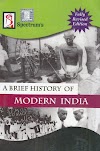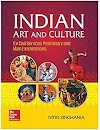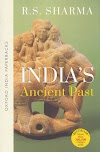Language and Literature
"Literature is the fine reflection of our society, nothing less, nothing more"
- Language
- Script of the language
- Families of Indian languages
- Indo-Aryan group of language
- Dravidian language
- Sino-Tibetan group of language
- Austric language
- Classical languages
- Literature
- Sanskrit literatures
- Classification of Sanskrit literatures - Vedic and Classical
- Vedic literatures
- Rig Veda
- Yajur Veda
- Sama Veda
- Atharva Veda
- Extended texts of Vedas
- Brahmanas
- Aranyakas
- Upanishads
- Puranas
- Classical Sanskrit literatures
- Pali and Prakrit literatures
- Buddhist literatures
- Jainism literatures
- Tamil literatures
- Urdu language and literatures
Script of the language
- Brahmi and Kharosthi are considered as the oldest script of India.
- Kharosthi was practiced in North-Western part of Indian Sub-continent (today's Pakistan) whereas the Brahmi script was practiced in all over the India.
- Brahmi is considered as the mother of all Indian Scripts.
List of different languages and their scripts
- Hindi and Sanskrit - Devanagari
- Punjabi - Gurumukhi
- Kashmiri - Sharda
- Urdu - Persian and Nastaliq
- Marathi - Modi
- Bengali - Bengai
- Tamil - Vettellottu
- Malayalam - Manipravalam
- Kannada - Kadamba
- Telugu - Telugu
All the Indian languages are considered as one of the most advanced language in the world. All the Indian languages follow Abugida System of language.
In this system of writing, consonants are always written and vowels are used as diacritic (i.e., matras). The only exception is when the word starts with a vowel, then the vowel is written.
The benefit of Abugida System is that, the writing corresponds to dictation.
Families of Indian languages -
There are four families of languages in India which are as follows:
- Indo Aryan group of languages
- Dravidians languages
- Sino Tibetan group of languages
- Austric languages (Austro Asiatic languages)
Languages of Indo Aryan group of languages -
- Sanskrit
- Hindi
- Punjabi
- Bengali
- Gujarati
- Assamese
- Oriya/Odiya
- Kashmiri
- Nepali
Dravidian languages -
- Tamil
- Kannada
- Malayalam
- Telugu
Sino Tibetan group of languages -
- Manipuri
- Naga
- Arunachali
- Meitei (Manipur)
- Mizo
- Sikkimese
Austric languages -
- Lepcha
- Dongri
- Santhali
- Gondi
- Mondari
- Andamanese
- Nicobarese
- Bodo
- Khansi, etc.
Classical languages - To get the status of Classical language, the language must be very old. It must have well established grammatical rules and it is still very popular and practiced at a wide level.
The Classical language status is conferred by Sahitya Academy, whereas the status of Classical music and Classical dance is given by Sangit Natak Academy.
Only 6 languages have been given the status of Classical language. These 6 languages with the year in which the Classical language status was given are as follows:
- Tamil - (2004)
- Sanskrit - (2005)
- Kannada - (2008)
- Telugu - (2008)
- Malayalam - (2013)
- Oriya/Odia - (2014)
Literature
- Generally they are very old.
- They can be written as well as oral.
Sanskrit Literature
- Sanskrit is considered as the mother of many Indian languages.
- It is not only trans-boundary in nature but also trans-religious (transboundary means that Sanskrit is practiced in India but it came to India from outside, i.e., Central Asia and trans religious means that Sanskrit is not bounded by any religion, one can find the use of Sanskrit language in other religion's religious scriptures such as some part of Zend Avesta is written in Sanskrit. Apart from that Sanskrit was not only practiced by Hinduism but also in Buddhism and Jainism).
- Sanskrit literatures can be classified into two parts:
- Vedic Sanskrit Literatures
- Classical Sanskrit Literatures
Vedic Sanskrit literatures - Vedic Sanskrit literatures consists of 4 Vedas, Extended texts of Vedas (Brahmanas, Aranyakas and Upanishads), Epics (Ramayana and Mahabharat) and Puranas.
Vedas - There are 4 Vedas in Hinduism. They are considered as the sacred books by Hindu religion. They are -
- Rigveda
- Yajurveda
- Samaveda
- Atharvaveda
Rigveda -
- Rigveda is an earliest collection of 1024 hymns (psalms).
- It gives beautiful description of nature, for example mountains, rivers, etc.
- It is also accomposition of prayers and mantras seeking the well being of society and also to inculcate higher values of life. For example, honesty, dedication, morality, etc.
- It is also very important source of information about the society, economy and polity of Early Vedic Period.
- Himalayas were mentioned as Jamavant Parvat in Rigveda.
- Experts in Rigveda are known as Hotra/Hotri (i.e., one who recites the hymns/mantras of Rigveda was known as Hotri).
Yajurveda -
- Yajurveda is considered as the Veda of rituals and sacrifices.
- It is also the Veda of Yajnas.
- It provides elaborate guidelines on how to perform Yajna.
- Of all the Vedas, it is the most popular.
- Experts of Yajurveda are known as Adhavaryu (i.e., one who recites the hymns/mantras of Yajurveda was known as Adhavaryu).
Samaveda -
- It is derived from the word 'Saman' which means music.
- All the hymns of Rigveda which was sung constitutes Samaveda.
- It is also considered as the 'Veda of Music'.
- It contains near about 16000 ragas and raginis (tunes and melodies).
- The last part of Samaveda is Gandharva Veda which is considered as the rule book of music.
- Experts of Samaveda are known as Udgatar/Udgatri (i.e., one who recites the hymns/mantras of Samaveda was known as Udgatri).
Atharvaveda -
- The origin of Atharvaveda can be attributed to Atharva Rishi and Angira Rishi.
- It is the most elaborated Veda.
- It talks about the cure of 99 diseases.
- It is also considered as 'the book of spells and charms (magic)'.
- It has chapters on Astronomy, Astrology, Mathematics, Zoological and Botanical knowledge of India.
Extended texts of Vedas - These are those texts which try to explain the tenets (i.e., doctrines) of Vedas.
1. Brahmanas -
- They are the first and foremost explanatory book of Veda.
- It tries to expand and explain the ideals of Vedas and consolidate it among the masses.
2. The Aranyakas -
- These are considered as the forest books.
- The knowledge of Aranayakas is disseminated to the people in the Vanaprastha stage of life.
- Aranyakas deal with the mystery of Vedas.
- It talks about all kinds of magic.
3. Upanishads -
- Upanishads means sitting nearby Gurus to learn from him.
- Upanishads deal with philosophy of Vedas. It talks about the difficult discussions like soul, spiritualism, origin of life, origin of Earth and Universe, etc.
- There are more than 120 Upanishads but only 108 Upanishads are considered as sacred in Hinduism.
- The motto of Government of India, "Satyamev Jayate" is taken from Mundaka Upanishad.
- The tagline of Incredible India, "Atithi Devo Bhava" is taken from Taittiriya Upanishad.
- The phrase "Asato Ma Sadgamaya, Tamaso Ma Jyotirgamaya, Mrityorma amritam gamaya" which means take me from the darkness to the light, was taken from Brihat Aranyakas.
The mantra is broken down into three lines:
"Asato ma sadgamaya" - means Lead me from the unreal to the real.
"Tamaso ma jyotirgamaya" - means Lead me from the darkness to the light.
"Mrityorma amritam gamaya" - means Lead me from death to immortality.
- Nachiketa and Yama Conversation is mentioned in Katho Upanishad (Kathopanishad).
Puranas - Puranas means the one which renews the old. Puranas try to establish ideals of Hinduism through mythological stories. They are also very important source of history.
Puranas can be divided into 4 categories -
- Sarga - It deals with the creation of universe.
- Pratisarga - It deals with the destruction of the universe.
- Manvantara - It deals with the story of the first human beings Manu and Ila.
- Uamsanucharita - It dals with the history of many ruling dynasties. For example - Satavahanas history can only be traced from Puranas. Mauryas and Guptas history are also mentioned in Puranas.
Epics - There are two main epics in Hinduism. They are -
- Ramayana - The Story of Lord Rama
- Mahabharata (also known as Jayasamhita) - The story of Pandavas and Kauravas.
Classical Sanskrit literatures
- Mudrarakshasa - written by Vishakhadatta (it deals with the fight between Nandas and Mauryas).
- Mricchakatika - written by Shudraka (Mricchakatika means the Clay Cart, It deals with the Satire on Society).
- Buddhacharita - written by Ashwagosh (it is the biography of Gautam Buddha).
- Harshcharita - written by Banabhatta (it is the biography of Harshvardhan).
- Uttarramcharita - written by Bhavabhuti (it deals with the life after Lord Rama).
- Books of Kalidas -
- Abhijyan Shakuntalam - Love story of Shakuntala and Dushyant.
- Vikramorvashiyam - Love story of Pururavava and Urvashi.
- Malvikaagnimitram - Love story of Agnimitra Shunga and princess of Vidisha, Malvika.
- Kumarsambhavam - Making of a young god, Kartikeya.
- Raghuvansam - Story of clan of Lord Rama.
- Meghadootam - Poetry (sending letters through clouds).
- Ritusamhara - Poetry (medley of season, i.e., songs of seasons).
- Sanskrit grammar books
- Astadhyayi - written by Panini.
- Mahabhasya - written by Patanjali (it is a commentary on Panini's Astadhayi).
- Amakosha - writen by Amarsimha (lexicography, book of vocabulary).
- Scientific literature books
- Charak Samhita - Charak (Medicine)
- Sushruta Samhita - Sushruta (Surgery) - It is a book on surgery which also mentioned some surgical instruments. Moreover, it happens to be the first book which mentions plastic surgery and rhino plastry (i.e., nose recorrection surgery).
- Rasarnava and Rasaratnakara - Nagarjna (Metallurgy and Alchemy, i.e., turning any metal into gold).
- Aryabhatiya - Aryabhatt (Astronomy)
- Brihat Samhita - Varahmihir (Cloud formation theory)
- Bramhasphuta Siddhanta - Brahmagupta (Helio centric theory, i.e., Sun is the axis and other planets are revolving around it).
- Lilawati and Arthganit - Bhaskara Charya (Mathematics)
Note - Brahmagupta was the first who mentioned Zero.
Pali and Prakrit Literatures
Evolution of Pali and Prakrit languages
Archaic Prakrit is the product of some deviations from the Sanskrit language and the mixture of Indian languages of Ancient time, which later resulted into Pali and Prakrit language.
Buddhist literatures
The majority of Buddhist literatures was written in Pali language but there are also large number of Buddhist books/literatures which are written in Sanskrit language also.
On the basis of languages, Buddhist literature can be divided into two categories -
- Canonical literature
- Non-Canonical literature
Canonical Buddhist literature - They are written only in Pali language.
For example -
- Suttapitaka (original teachings of Buddha)
- Vinayapitaka (rules for the monks)
- Abhidhammapitaka (philosophical interpretation of Buddha's teachings)
Non-Canonical Buddhist literature - They are not only written in Pali language but also in Sanskrit language.
For example -
- Buddhacharita (Sanskrit) - Biography of Gautam Buddha
- Dipavamsa (Pali) - It is the Sri Lankan chronical of Buddhism
- Mahavastu (Pali) - It is the holy textbook of Theraveda.
- Lalitvistara (Sanskrit) - It is the holy textbook of Mahayan Buddhism.
Therigatha -
- It is found in both Sanskrit and Pali language.
- They are the unique text in Buddhism which was written by the women and attributed to the women.
- It talks about women's experience of renunciation.
Jataka Katha -
- They are also found in both Sanskrit and Pali language.
- These are mythological stories related to previous birth of Buddha.
- It also gives intellectual lessons.
- For example - Virupandita jataka, Ruru jataka, Sibi jataka, Chandanta jataka, etc.
Jain literatures
- Jain literature was mostly written in Prakrit language.
- Jain literature not only highlights the doctrines of Jainism but also it talks about the doctrines of rival schools.
- They are very important source of information about the history of Eastern India.
- Jain literature was the first which mentioned 16 Mahajanpadas (in Bhagwatisutra).
- Examples of Jain literatures are as follows:
- Purva
- Anga
- Agma
- Upanga
- Prakirna
- Mulasutra
- Bhagwatisutra
Tamil literature
Evolution of Tamil Literature
- Tamil literatures are also known as Sangam Literatures (because these literatures are related to the Sangam period and Sangam assemblies).
- It evolved in between 1st century BC to 6th century AD.
- Under the Pandaya rulers of Madhurai, 3 Sangam assemblies were held which resulted into Tamil literatures.
- It is believed that the 1st Sangam assembly was mythological and attended by gods and angles. No book survived from this assembly.
- Only one book survived from the 2nd Sangam assembly which is 'Tolkappiyam' (Tamil grammar book).
- All the books of the 3rd Sangam assembly survived which can be divided into the following categories.
- Malkanakku (Major works) - It talks about the political exploits (adventures) of the Pandaya rulers. They are further divided into 2 sub-categories.
- Ethuthogai
- Pattuppattu
- Kilkanakku (Minor works) - These books are the books on ethics and morality and code of conduct. There are 18 such books.
After the Sangam assemblies, two epics were written. These are -
- Silapadhikaram - written by Ilango Adhigal
- Mannimekalai - written by Chattanar
Thirukkural written by Thiruvalluvar serves as the manual percept to the Tamil society. It is full of quotations on almost each and every subject. It is a book of wisdom, ethics, moralilty and code of conduct.
Note - In Tamil Nadu, the pledge of Thurukkural was taken inside the court.
Urdu language and literature
Evolution of Urdu language
- Urdu is a Persian word which means Camp.
- It emerged from the military camps of Delhi Sultanate.
- It borrowed vocab from Persia, Turkish, Hindawi and Khari boli.
- The grammatical structure was borrowed from Shauraseni language used in Mathura area.
- The first person who started to write in Urdu language was Amir Khusrao.
- Some of the famous books of Amir Khosrow are as follows -
- Nuti Siphir
- Stirin Khusrau
- Laila-Majnun
- Deval Rani Khizra Khani
- First state to give Urdu the status of court language was Golconda.
Previous Article - Indian Classical Music
Next Article - Traditional Indian Theatres
Notes on other subjects
Optional Subject
Note - This is my Vision IAS Notes (Vision IAS Class Notes) and Ashutosh Pandey Sir's Public Administration Class notes. I've also added some of the information on my own.
Hope! It will help you to achieve your dream of getting selected in Civil Services Examination 👍






0 Comments